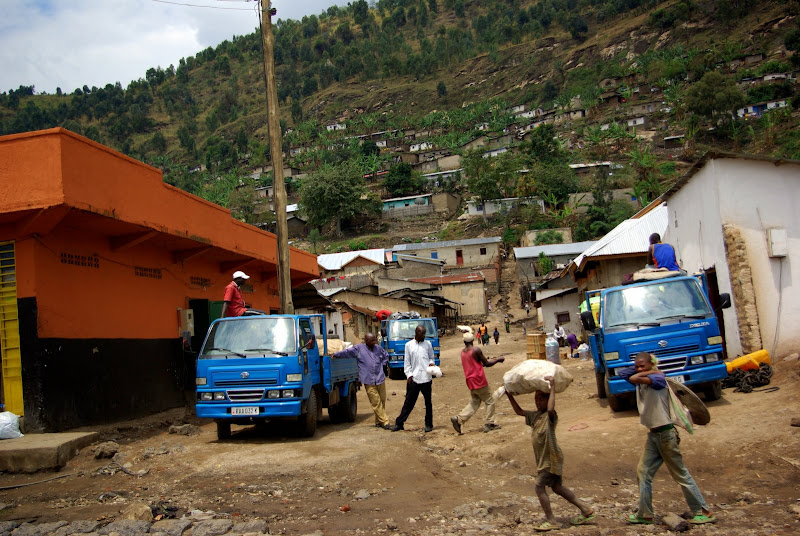On Sunday, I went to visit two genocide memorials that are about 35 km south of Kigali. They are Catholic Churches that were sites of the killing of thousands of Tutsis during the 1994 genocide. The first church visited was Nyamata, and the text below from the National Museum of Rwanda provides a good background:
Nyamata is situated in the Bugesera district of Rwanda about 35 km from the capital city of Kigali. Nyamata and the surrounding area are classified as one of the regions that was most devastated by the 1994 Genocide. The reason for this can be found in the history of the Bugesera region. From the beginning of the 1960s, Tutsi people from different areas of Rwanda were forced to leave their homes and go to live in this region which was considered very unhealthy at that time. Therefore, Bugesera became a region whose population was predominantly Tutsis.
When the Genocide started in April 1994, many people from Nyamata and surrounding areas came to gather in the town of Nyamata. The Catholic Church and nearby houses belonging to the priests and sisters became havens for the frightened people who fled there hoping to escape death. They used the church as a refuge, thinking the militia would not get in and kill them in a place usually thought of as a sanctuary. However, according to the testimonies given by survivors, on April 10th 1994 about 10,000 people were killed in and around the area of the Catholic Church. People from all around congregated in the church and locked the iron door with a padlock to protect themselves from the marauding killers. Members of “Interahamwe”, the Hutu militia, and the Rwandese Government Forces from the surrounding area managed to break down the door and entered the church with their rifles, grenades and machetes. They massacred all the people who were inside this church and also the people in the surrounding area.
The person that provide the tour of the Memorial was a survivor of Nyamata. He was 8 years old at the time and was among 16 total survivors from within the church. He lain among the dead bodies for several days as if he was dead before fleeing to a nearby swamp. He and the other 15 stayed there for 32 days before finding safety. Needless to say, he told stories of horrors that he witnessed that you can't really retell in a venue like this.

The pews and floor of the church are covered with the blood soaked clothes of the thousands of victims. There are holes in the windows and metal ceiling from the shrapnel of the grenades that were used.
Underground behind the church, there are multiple mass graves. They are about 12 feet deep with a narrow walkway and shelves on each side. There are coffins for the bodies that could be identified, but primarily there are just scores of skulls and other bones stacked on the shelves.
The second church, Ntarama, represents a very similar story. Thousands of Tutsis were killed in the same fashion as Nyamata. The banner across the altar reads "If you knew me and you really knew yourself, you would not have killed me."





















































